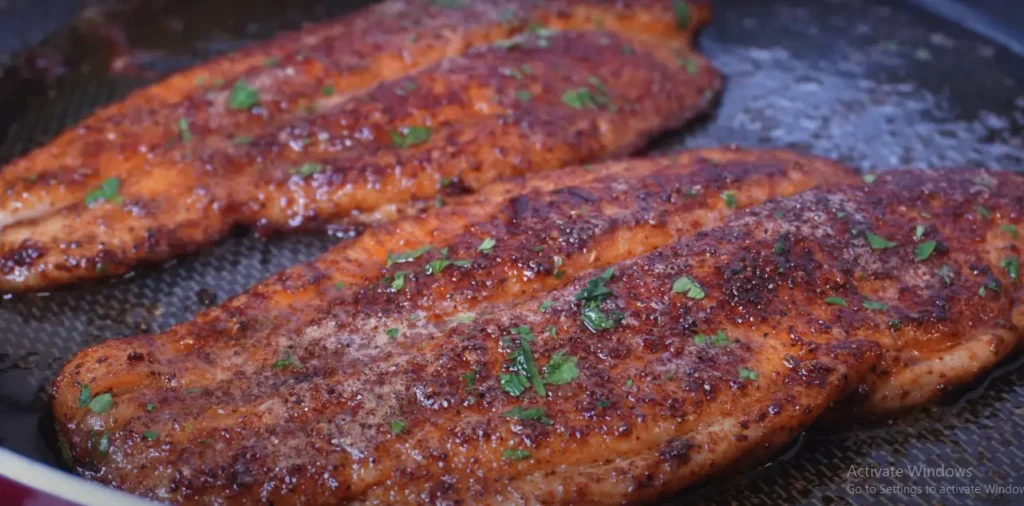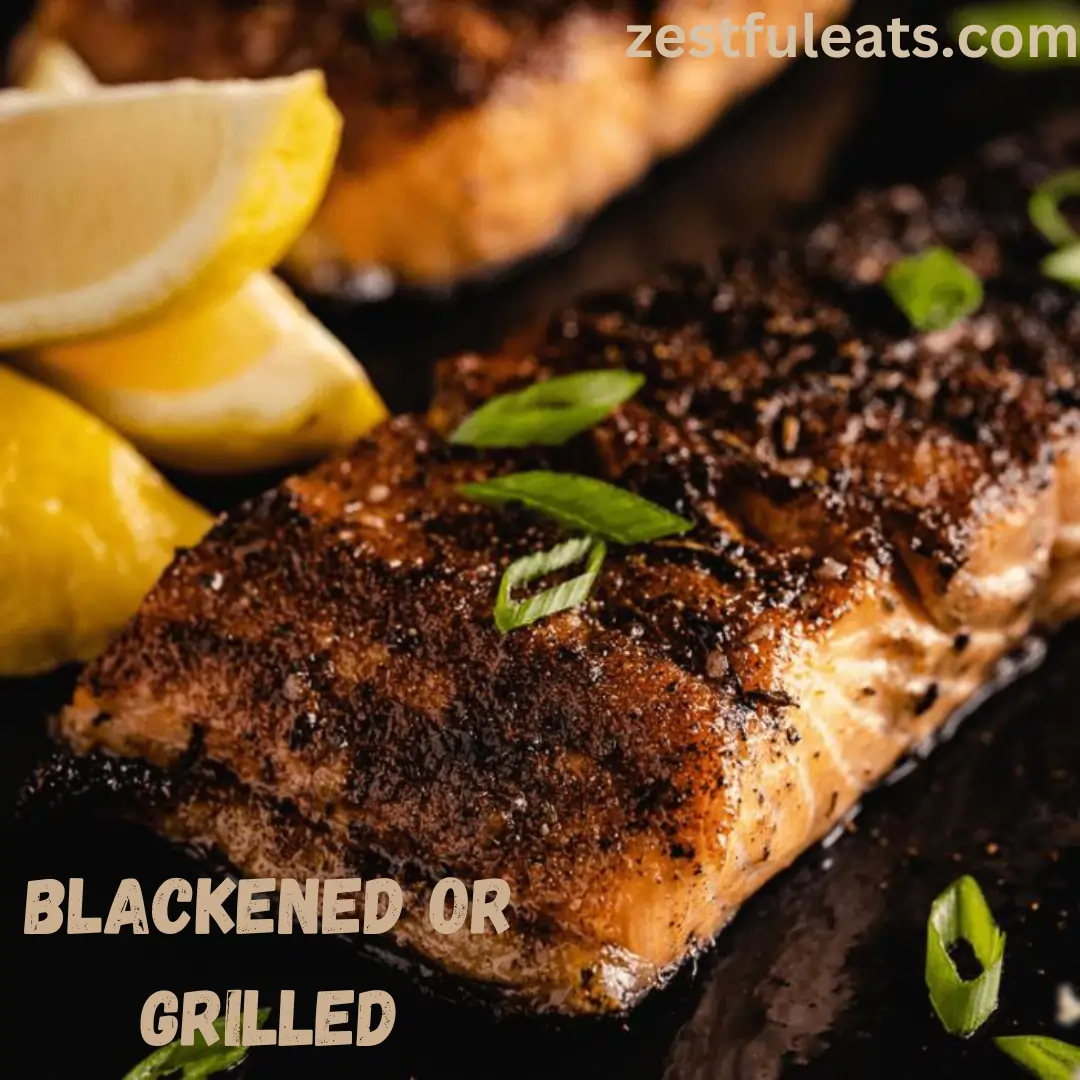Blackened or Grilled: 3 Key Differences That Will Change Your Cooking!: Three Crucial Contrasts That Will Transform Your Culinary Skills!
Cooking a delicious meal, either inside or outside, is always a delightful experience. Blackened and grilled are two favored cooking techniques that add exceptional taste to your dishes. In this article, we will delve into the differences between blackening and grilling, how to master each method, and why choosing one over the other could elevate your cooking. Let's dive into the details!
Blackened or Grilled: 3 Key Differences That Will Change Your Cooking!: Three Essential Variations That Will Elevate Your Culinary Techniques!
Grilling is a popular, versatile cooking method ideal for meats, vegetables, and fruits, both outdoors and indoors. It cooks food quickly and evenly, reducing fat and adding a smoky flavor. This simple technique requires minimal equipment—just a grill and some fuel like charcoal or propane. Various types of grills offer unique advantages, allowing anyone to master grilling and enjoy delicious meals with ease.Blackened or Grilled: 3 Key Differences That Will Change Your Cooking!: Three Critical Techniques to Enhance Your Grilling Skills!
To grill food effectively, clean and preheat your grill for even cooking and to prevent sticking. For charcoal grills, ensure coals are evenly spread and ashed over. Lightly oil and season your food before placing it spaced apart on the grill. Cook patiently without frequent flipping, using a meat thermometer to check for doneness—145°F for beef and fish, 165°F for chicken. Let the food rest off the heat before serving. These steps will ensure perfectly grilled dishes.Blackened or Grilled: 3 Key Differences That Will Change Your Cooking!: Transform Your Dishes with These Three Methods!
Grilling offers various techniques tailored to different foods. Direct grilling cooks food over the heat, ideal for thin cuts, imparting a charred flavor and crispy texture. Indirect grilling cooks larger cuts away from the heat, slowly and evenly, for juicy, tender results with minimal flare-ups. Smoking, using low heat and wood chips, is perfect for meats like brisket or ribs, enhancing them with a deep smoky flavor and tenderness. Each method, from quick searing to slow smoking, offers unique benefits and rich flavors.Blackened or Grilled: Understanding Blackening in Cooking
Blackened cooking involves heavily seasoning food with spices like paprika and cayenne pepper, then searing it in a hot skillet to create a dark crust. Developed by Chef Paul Prudhomme, this Cajun technique is suitable for chicken, fish, and vegetables. It requires high heat, usually from a cast-iron skillet, and needs to be done quickly to avoid burning. The resulting bold, smoky flavors of blackened dishes are often balanced with milder sides such as rice or beans.
Blackened or Grilled: Enhance Your Cooking with Bold Flavors!
Blackening is a cooking technique that delivers a burst of spicy flavors and a distinct crust. Start by choosing a base like chicken, fish, or bell peppers. Mix a blend of spices such as paprika, cayenne pepper, garlic powder, and onion powder. Thoroughly coat your chosen item with this blend, ensuring all sides are covered.Heat a cast-iron skillet or another heavy pan over medium-high until it's extremely hot. Lightly oil the pan, then add your seasoned food, searing each side for 2-3 minutes until a blackened crust forms. This method generates a lot of smoke, so good kitchen ventilation is crucial. Once blackened to your preference, let the food rest before serving. Pair it with sides like rice or beans to complement the intense flavors of the spices. Note: Blackening involves high heat which can produce compounds that may be harmful if consumed frequently. Enjoy your blackened dishes in moderation for a safe and flavorful experience. Why not start with our recipe for Blackened Tilapia with an Asian-inspired sauce? It’s a quick and flavorful dinner option perfect for any day of the week!Key Differences Between Blackened and Grilled Cooking
| Aspect | Grilling | Blackening |
|---|---|---|
| Cooking Method | Cooking over an open flame or gas grill. | Searing in a hot pan. |
| Flavor Emphasis | Enhances natural flavors with smoke; minimal seasoning. | Heavily seasoned with a robust spice mix for bold flavors. |
| Seasoning | Minimal to moderate, focuses on natural flavors. | Includes paprika, cayenne pepper, garlic powder, etc. |
| Technique Details | Direct exposure to heat, suitable for a variety of foods. | Creates a dark, crispy crust; hallmark of Cajun cuisine. |
| Heat and Time | Longer time over moderate heat. | Quick cooking at high temperatures. |
Health Considerations in Blackened vs. Grilled Cooking
Both grilling and blackening are celebrated for their delicious outcomes but carry potential health risks due to the high heat involved. These methods can generate carcinogenic compounds, such as heterocyclic amines (HCAs) and polycyclic aromatic hydrocarbons (PAHs), which pose cancer risks and other health issues. However, these risks can be mitigated by choosing lean meats, marinating before cooking, and opting for lower cooking temperatures to reduce carcinogen formation.Blackened or Grilled: Balancing Flavor and Health
Despite potential health concerns, grilling and blackening remain popular for their flavorful results and the joy of cooking with friends and family. These methods not only enhance the dining experience but also offer a chance to bond over food preparation. To ensure healthier cooking, use lean cuts of meat, marinate foods to decrease carcinogen production, and manage cooking temperatures effectively.Embracing Culinary Creativity with Grilling and Blackening
Whether you are an experienced chef or just starting out, grilling and blackening provide extensive opportunities to experiment with flavors and ingredients. The array of available cooking tools and techniques today makes it an excellent time to explore these cooking methods. So, ignite your grill or heat up your skillet and dive into the art of cooking, crafting dishes that will tantalize the taste buds and create memorable meals.FAQS:
Which is healthier, blackened or grilled?
Grilling is generally healthier than blackened cooking. Grilling cooks food over an open flame, typically with less fat, whereas blackened food often requires dipping in melted butter before coating with spices, adding more fat and calories.
What’s the difference between grilled and blackened steak?
Grilled steak is cooked directly over a heat source, giving it a smoky flavor and distinct grill marks. Blackened steak is cooked in a high-heat skillet, coated in spices, producing a dark, flavorful crust with bold, spicy notes.
Is blackened meat good for you?
According to the American Institute for Cancer Research, blackening meat, which involves charring, can create heterocyclic amines (HCAs). These compounds are carcinogens and may increase cancer risk.
Is blackened grilled or fried?
Blackening is distinct from grilling; it involves coating food with spices and searing it in a hot pan to form a dark, crispy crust. Grilling, on the other hand, cooks food over an open flame or gas grill.
Is blackened a flavor?
Yes, “blackened” refers to a seasoning style that combines herbs, spices, and a touch of cayenne pepper for mild heat. It’s flavorful but not overly spicy, making it customizable if you prefer less spice.
